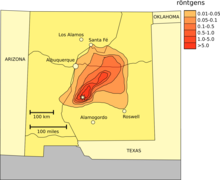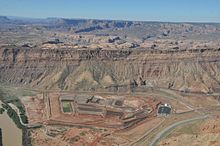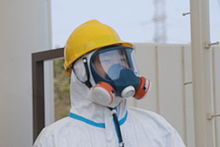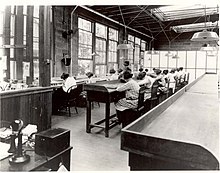Nuclear ethics
[5] Indeed, some scholars claim that nuclear deterrence seems to be the morally rational response to a nuclear-armed world.
[6] Moral condemnation of nuclear deterrence, in contrast, emphasizes the seemingly inevitable violations of human and democratic rights which arise.
[7] In contemporary security studies, the problems of nuclear warfare, deterrence, proliferation, and so forth are often understood strictly in political, strategic, or military terms.
The role of the two atomic bombings of the country in Japan's surrender and the U.S.'s ethical justification for them has been the subject of scholarly and popular debate for decades.
[19] Some local opposition to nuclear power emerged in the early 1960s,[20] and in the late 1960s some members of the scientific community began to express their concerns.
The project was cancelled in 1975 and anti-nuclear success at Wyhl inspired opposition to nuclear power in other parts of Europe and North America.
[26] The government, mine owners, scientific, and health communities were all well aware of the hazards of working with radioactive materials at this time.
[27][28] Due to the Cold War demand for increasingly destructive and powerful nuclear weapons, these laborers were both exposed to and brought home large amounts of radiation in the form of dust on their clothing and skin.
[29] Epidemiologic studies of the families of these workers have shown increased incidents of radiation-induced cancers, miscarriages, cleft palates and other birth defects.
[52][53][54] This subculture of frequently undocumented workers (e.g., Radium Girls, the Fukushima 50, Liquidators, and Nuclear Samurai) do the dirty, difficult, and potentially dangerous work shunned by regular employees.
Many questions regarding these nuclear worker conditions go unanswered, and with the exception of a few whistleblowers, the vast majority of laborers – unseen, underpaid, overworked and exploited, have few incentives to share their stories.
[59] The median annual wage for hazardous radioactive materials removal workers, according to the U.S. Bureau of Labor Statistics is $37,590 in the U.S – $18 per hour.







